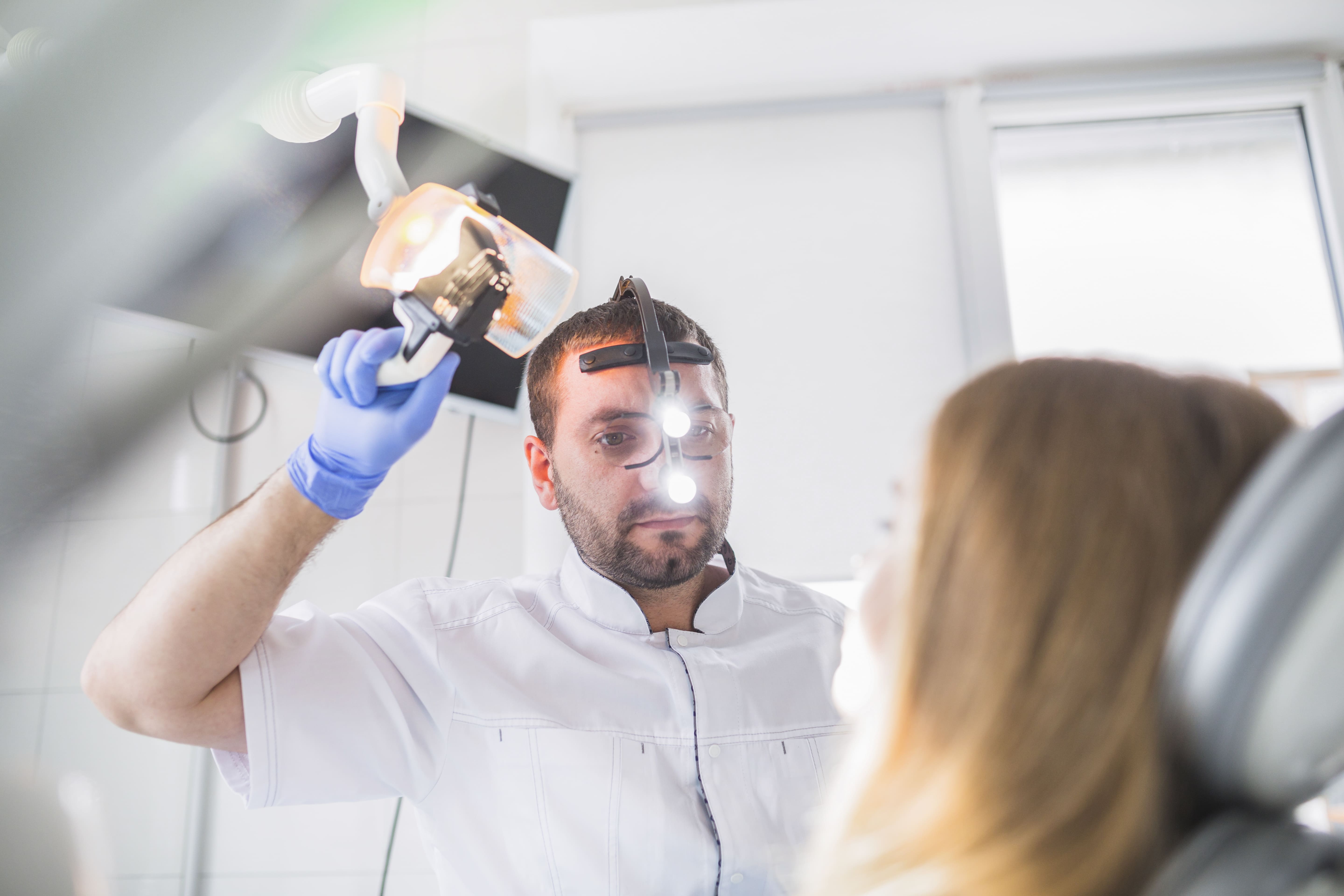
WHAT IS SINGLE VISIT ENDODONTICS?
Traditionally, root canal therapy requires multiple visits, but with single visit endodontics, many patients can have thus root canals completed in just one day!
How Does It Work?

D-iagnosis
Digital imaging used to determine if root canal is necessary.

T-reatment
We numb the teeth, and then clean out the infected/damaged tissue inside the teeth area

F-illing & Scaling
Once the inside of teeth is clean, we fill it with a non-reactive material and seal it to prevent future infections.

R-estoration
A crown or filling will be placed on the treated teeth to make it as good as now.
Benefits of Single Visit Endodontics
Convenient
No hassle of multiple appointments—it's all done in a day.
Less Stress
One treatment session means fewer days worrying about dental visits.
Quick Relief
You'll leave the clinic with your teeth problem resolved in a single day.
Advanced Technology
Latest tools and techniques ensure comfort and a successful outcome.
Surgical Endodontics: What You Need to Know
Surgical endodontics, also known as:
- Apical Surgery
Apical surgery is a procedure designed to save a tooth that has already undergone root canal treatment but still has ongoing issues such as infection or inflammation around the tooth. Instead of removing the tooth, this surgery addresses the problem by treating the root tip and surrounding tissues.
Why Would I Need Surgical Endodontics?
After a root canal, most teeth heal well. However, sometimes infection or inflammation persists in the original root canal treatment.
This may be due to:
- ✔ Small fractures or hidden canals in the root that weren’t seen in the original X-rays.
- ✔ Blockages that prevent cleaning inside the root during the regular root canal.
- ✔ Persisting pain and other symptoms even after re-treatment.
Surgical endodontics is performed to clean up these issues so you can keep your natural tooth instead of needing an extraction!


How does the procedure work?
- ✔ Initial examination: Endodontist will assess your tooth and take X-rays to determine, if surgery is necessary.
- ✔ Numbering the area: Local anesthesia is used to relieve any pain, you will stay awake but the area will be completely numb.
- ✔ Accessing the root tip: The endodontist will make a small incision in your gum to access the born and tip of the tooth root.
- ✔ Removing the problem area: Any infected/ inflamed issue around the root is cleaned out. The very tip of the root may be removed. Sometimes a seal is placed at the tip.
- ✔ Clossing the gum tissues: After cleaning the area incision is closed with a few stitches and the healing process begins.
What to Expect After the Procedure
After surgery, it is normal to feel some tenderness or mild swelling. Here is what you can expect:
You may have some discomfort for a few days, but over-the-counter drugs usually manage this well.
A bit of swelling at the site of surgery is common. Using an ice pack for 10-15 minutes at a time can help reduce this.
The stitches will dissolve or be removed after a few days.
Your endodontist will schedule a follow-up appointment to check how the area is healing and ensure everything is on track.
Why Not Just Pull the Tooth?
It's always best to try to save your natural teeth if possible. While pulling the tooth may seem easier, it can cause serious issues:
1. Need for more expensive procedures like dental implants or bridges to replace the missing teeth.
2. Changes in how you bite or chew.
3. Bone loss in the jaw where the tooth was removed.
Restoring Your Smile After a Root Canal
After Root Canal Treatment, the tooth structure may weaken, so restoration is often needed to bring back its strength, function, and appearance.
WHY RESTORATION IS SO IMPORTANT?
1. Protects your tooth from breaking.
2. Restores natural tooth function.
3. Gives your tooth a natural look, blending seamlessly with your smile.
4. Prevents damage or decay.
Here is a look at the restorations we offer and how they work in tandem to help you to get back your smile!
Fillings
Most common type of tooth restoration used for small cavities or areas of decay. We mostly use tooth coloured composite fillings.
- Fast and easy procedure.
- Matches your teeth colour
- Great for smaller cavities
Dental Crowns
A crown is like a protective cap that covers the entire teeth.
- Protects weak, cracked, or damaged teeth.
- Looks and feels like natural teeth.
- Ideal for molars under heavy chewing pressure.
Veneers
Thin shells of ceramic that cover the front of your teeth.
Used mainly for cosmetic reasons, such as chipped, discoloured or slightly crooked teeth.
- Great for smile designing
- Minimaly invasive option for improving your smile.
- Excellent translucency to give a natural finish.
Inlays & Onlays
Inlays and onlays are custom made pieces that fit on to your teeth.
An inlay is placed inside the tooth’s biting surface. While an onlay covers more of the tooth, sometimes extending over the edges.
- Stronger than fillings, but less invasive than crowns.
- Custom designed for a perfect fit.
- Preserves more natural tooth structure.
Overlays
Overlays are similar to Onlays, but it covers a larger portion of the tooth, often including all the cups of the tooth.
- Covers and protects the entire biting surface.
- Less tooth reduction compared to a crown.
- Durable and long-lasting.
Dental Implants
If a tooth is missing, a small metal post is placed in your jaw bone to act as the new root of tooth.
A crown is attached to the implant for optimal aesthetics and function.
- Implants are permanent, they do not slip or move when eating or speaking like dentures.
- Implants help maintain jaw bone health and height.
- They replace missing tooth without affecting neighboring teeth. Bridges require grinding down of adjacent healthy teeth for support.